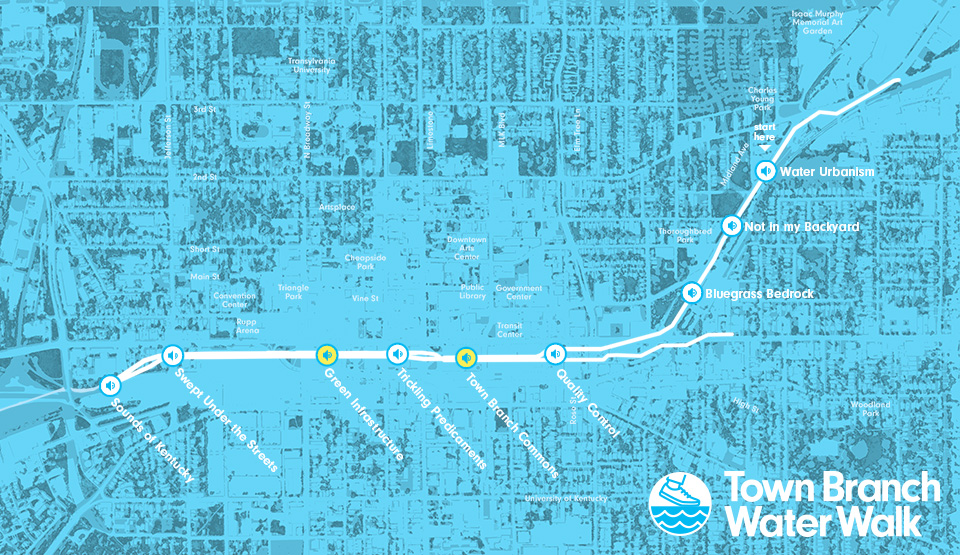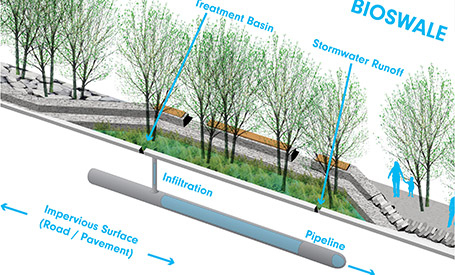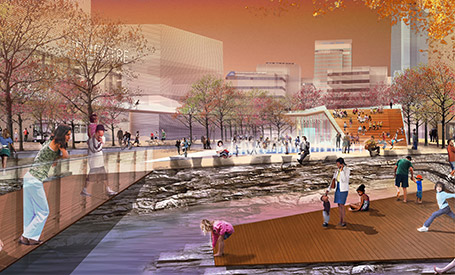Green Infrastructure
Are there other ways to deal with stormwater besides pipes? How can green areas make a difference? This podcast examines green and grey infrastructure, and how they relate to one another. Both are key parts of makes cities and rivers run. You will learn about these different kinds of infrastructure and their roles in urban water management
Terms
Green Infrastructure: A patchwork of natural areas that provide habitat, flood protection, cleaner air, and cleaner water by using vegetation, soil and natural processes to manage water and create healthier urban environments (US EPA)
Grey infrastructure: Conventional drainage and water treatment systems, which usually use pipes and tanks to move, store and clean water.
Infiltration: Process by which water on the ground surface enters the soil Pervious surface: Allow space for water to infiltrate into the soil below.
Impervious surface: Does not provide space for water to infiltrate. Impervious ground cover causes problems in storms when rainwater or snowmelt run off streets or other hard surfaces, instead of going back into the ground, and can cause flooding
Bioswale: A sunken landscape feature that collects water and allows it to infiltrate into soil; the swale is generally filled with vegetation, compost or riprap
Best Management Practice: A practice, or combination of practices, that has been determined to be effective and practicable way to prevent or reduce the amount of pollution generated by nonpoint sources to protect water quality.
Flashflood: A rapid flooding of low-lying areas, generally caused by heavy rain associated with severe thunderstorms, hurricanes or snowmelt.
Culvert: An underground pipe carrying a stream or water source.
EPA Consent Decree: In order to comply with the Clean Water Act, which protects water resources from pollution, the Lexington-Fayette Urban County Government has agreed to make extensive improvements to its sewer systems to eliminate unauthorized overflows of untreated raw sewage and to reduce the pollution of urban storm water. Lexington is one of many cities throughout the U.S. upgrading its infrastructure under the Consent Decree.



